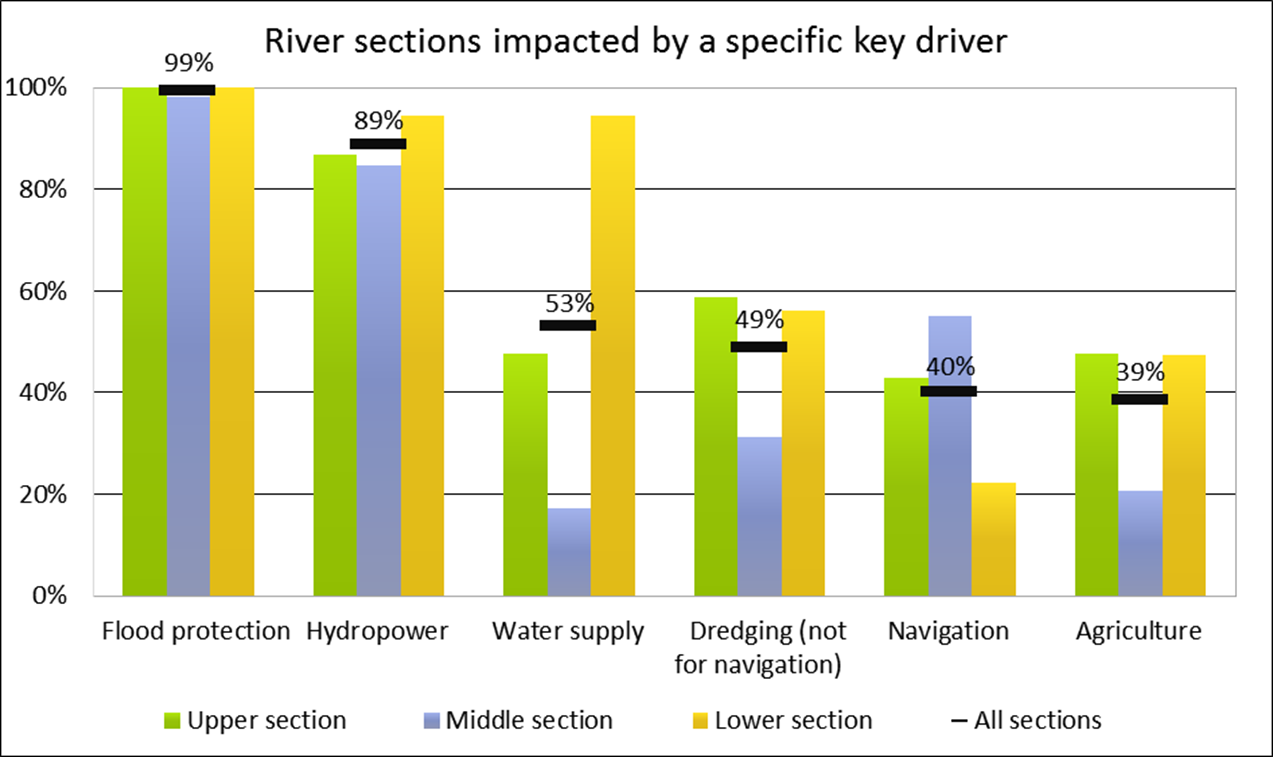DanubeSediment - Drivers and Pressures of Changes in the Sediment Regime
24-04-2019
DanubeSediment will not only determine the changes in the sediment regime of the Danube, but it also looks at the human activities that have caused these changes. The report on “Interactions of Key Drivers and Pressures on the Morphodynamics of the Danube” follows the first steps of the DPSIR methodology, meaning it examines changes to the state of the sediment regime based on drivers and significant pressures.
For the analysis in this report, every partner assessed their national section of the Danube River and the major selected tributaries in their country. According to this information, the report concluded that navigation, hydropower and flood protection are the main drivers generating significant pressures on the transport and continuity of sediment in the Danube River and the 19 major tributaries analysed in this project. The figure below shows the percentage of river sections that are impacted by a specific key driver.
The report also examined interruptions of longitudinal continuity and lateral connectivity, meaning to the downstream area and to the floodplains, respectively. The project partners rated the following pressures as significant, meaning they have an impact on the sediment regime, the morphological conditions and possibly on the ecological status of the waterbody: dams, weirs, groynes, ship locks/sluices, dykes, dredging, regularization works and artificial channels.
You can find the full report including many figures and maps that visualise the results and their distribution along the Danube under this link.

Percentage of river stretches to absolute length affected by key drivers on the Upper, Middle and Lower Danube River section and on all sections (NARW, 2019)
